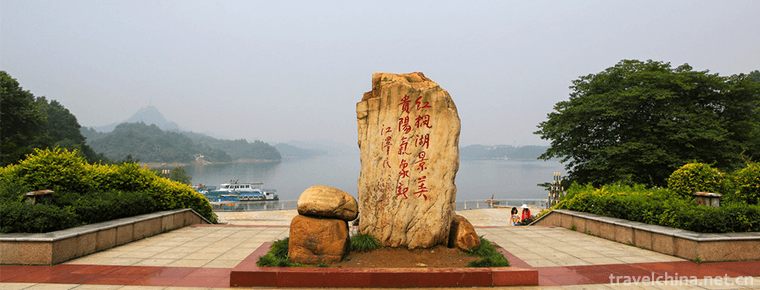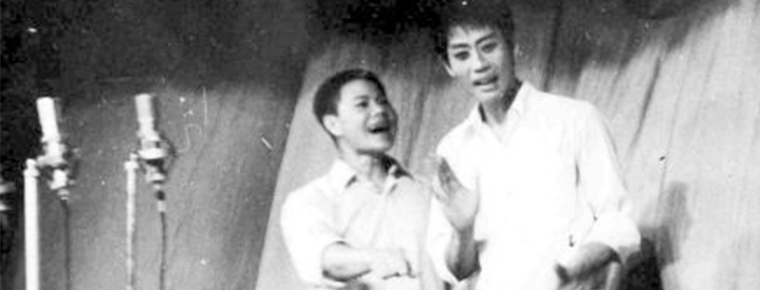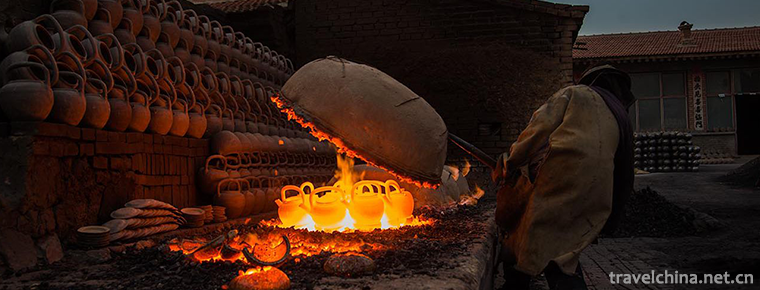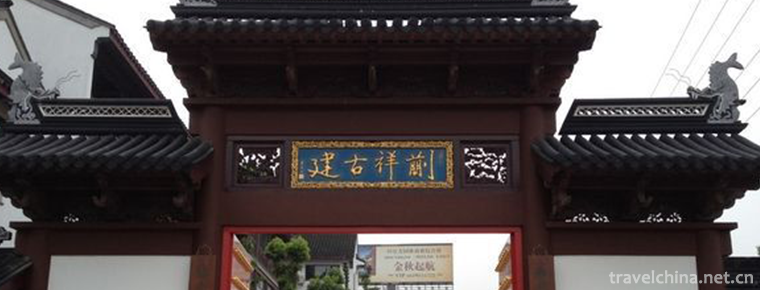Lantern Festival
Lantern Festival
Lantern, also known as "lantern", is a traditional folk handicraft originating in China.
It is closely related to the folk custom of Lantern appreciation in China. According to textual research, lantern appreciation began in the Western Han Dynasty and flourished in the Sui and Tang Dynasties, especially in the Ming and Qing Dynasties. The custom of Lantern appreciation in Shanghai was recorded in the local chronicles of Hongzhi and Jiajing years. From the 13th day of the first month of the summer calendar, lantern decoration in the 15th Lantern Festival reached its climax and touched people. Every Dragon Boat Festival and Mid-Autumn Festival, Shencheng's busy shopping street is also a flower lantern. Gaoxi, the city of lanterns is flourishing. Because of the long-standing custom of appreciating lanterns, the development of lantern art in Shanghai has been promoted.
In 2006, lanterns were selected into the national intangible cultural heritage list.
Historical origin
Lantern colors have a long history in China. The Lantern of Changxin Palace in Jingwang Tomb of Zhongshan has reached a high level in its shape and structure, fully demonstrating the wisdom and wisdom of Chinese lamp-making artists. Tianjin people have a great demand for lantern colors during the Spring Festival. The Miscellaneous Records of Jinmen recorded that during the Lantern Festival, Tianjin Tongqu was decorated with lanterns, set off flower torches and sang and danced everywhere. According to the old custom in Tianjin, from the 14th to the 17th of the first lunar month, the streets, businesses and houses in Tianjin have to be lit for five days. At night, the lights hanging on the walls, the lights hanging in front of the doors, and the lights of tourists... In the past, Tianjin was said to be "luxurious". In fact, wealthy businessmen were fighting for wealth. The lantern colors hanging during the Lantern Festival also became opportunities for them to show off their wealth. Many lantern paintings, or hand-painted by famous masters, or writing riddles with new ideas, were often dazzling.
The Lantern Festival gives Tianjin's lamp-making masters a chance to show their talents. Even Wei Yuantai, a kite master, has made lanterns. His lanterns are still enjoyed by people. Among many lamp-making masters, Wang Jichang is known as the "King of Lanterns". Wang Jichang (1893-1964) is a Shengfang native of Hebei Province. His father, Wang Yushu, is a simple and intelligent farmer who likes to make lantern colors. Every winter leisure time, he likes to make lantern colors. Wang Yushu went to the lamp-making artists to learn the skills of lamp-making. After painstaking research, he made lotus lanterns, carp lanterns and other popular lanterns, known as the local "Lantern King", and began to make a living by making lanterns. In the 1920s, Wang Jichang moved to Tianjin, inherited his father's lamp-making skills, and paid attention to observing carefully the life habits of various animals. He made duck lanterns and chickens. Lanterns, rabbit lanterns and fish lanterns are all vivid, and Wang Jichang has participated in International Lantern exhibitions abroad. Therefore, Wang Jichang has won the title of "Lantern King" in Tianjin. Wang Jinfang, Wang Defang and Sun Wang Changming, the sons of Wang Jichang, have inherited his skills and are active on the Tianjin folk art stage.
Culture and art
The Han Dynasty was the flourishing age of the art of lanterns in the early period of ancient times. Archaeologically excavated lamps in the Han Dynasty were abundant, such as street lamps, tripod lamps, seat lamps and animal-shaped lamps. The materials used in lamps were also copper, iron, pottery, jade and stone. Although the appearance of lanterns in the Han Dynasty was rarely recorded, the unearthed situation of lanterns could infer the richness and splendor of lanterns at that time.
Lantern Festival lighting activities in the Tang and Song dynasties set off the first climax. "Chaoyao Zai" recorded that the capital of the Tang Dynasty Lantern Festival "as a lamp wheel 20 feet high, dressed in brocade, decorated with gold and silver, burning 50,000 lamps, clustered like flowers." 2. It can be seen that at this time there have been large lantern trees, lantern mountains and flourishing for a time. To the Song Dynasty, a certain production center of lanterns was formed, and there were typical lanterns. Varieties. From Tang to Song Dynasty, the types of lanterns recorded included not only street lamps, Kong Ming lanterns, glazed lanterns, white jade lanterns, Fu lanterns, bead lamps, Luo silk lanterns, lambskin lamps, small palace lanterns with exquisite structure, beautiful decoration and various vivid colored tie-up figurines, but also lantern wheels, lantern trees, lamp towers and lantern scenery, which were stacked and bound by lamp colors. In Song Dynasty, special lamp markets appeared. The grandeur of the Lantern Festival in the Song Dynasty was better than that in the Tang Dynasty. It also increased the participation of folk activities. The rulers flaunted their benevolence and gave colored lanterns in the palace to the people. This encouragement made the Lantern Festival more lively.
The Lantern Festival in the Ming Dynasty was more lively, and it was the peak of the development of ancient Chinese lantern art. The prosperous industry and Commerce made the Ming Dynasty society, especially the city, form an era of "luxury to luxury", and the trend of "refinement" of the art of shadow became stronger and more distinct. From the Ming to the Qing Dynasty, the form of art always tended to luxury and elegance, contending for exquisite colors, and extremely exquisite and gorgeous. In the Ming and Qing Dynasties, the Lantern Lantern lantern The Festival has realized a profound value transformation, and it has got rid of the concern of belief in reality and transferred to the field of entertainment with aesthetic entertainment as its main theme.Lantern lanterns in Ming Dynasty lasted for ten days, and the art of lanterns has been more fully developed, and the types of lanterns have become more diversified.Only once a lantern festival, there will be golden lotus lanterns, lotus lanterns, Hydrangea lanterns, snow lanterns, snow lanterns, etc. There are dozens of kinds of lanterns, such as Xiuci lantern, Daughter-in-law lantern, monk's lamp, Tongjuan lantern, Shimao lantern, Liu Hai lantern, camel lantern, green lion lantern, ape lantern, white elephant lantern, catfish lantern, crab lantern, sheepskin lantern and grazing lantern. The specialized origin of flower lanterns in Ming and Qing Dynasties has been well-known since the Song Dynasty, including Foshan, Chaozhou, Quanzhou, Zhangzhou, Xiamen and Haining. Yangzhou, Danyang, Taizhou, Nanjing, Qingzhou, Chengdu, Beijing, Taigu and other places are famous for making lamps. Famous craftsmen also appeared successively in the Ming Dynasty, including Pan Feng, Wang Xuan, Zhao Jie, Wang Xinjian, Zhao Hu, Zhao Zhanyun, Gu Houshan, Zhang Jiuyan and Bao Zhuang Xing, while in the Qing Dynasty there were Niu Yuanqing, Xu Tinggong, Shen Yuchen, Xu Zhixiang and Shen Zean. A group of collectors of lanterns show the flourishing of lantern art in Ming and Qing Dynasties.
In addition, it is worth mentioning that there is also an ice lamp in northern China, which is a special ornamental lamp influenced by climatic conditions. Around the fifteenth day of the first lunar month, when the temperature is lowest in the north, ice is used as a lamp, which can last for several decades. By utilizing the characteristics of ice crystal and translucent light, and supplemented by candles, it creates a natural, simple and brilliant effect, and becomes a colorful art of northern lamps. Ice lanterns, originally unique to northeastern China, became the custom of Zhongyuan Lantern Festival with the entry of the Qing Dynasty, and their production matured in the Qing Dynasty. Due to the widespread application of electric lamps, this art of ice lanterns has a broader prospect of development, with a growing variety and scale, becoming the most influential scenic spot of the Northern Lantern Festival. Flower lanterns are mostly modeled in four, five and six dimensions. Based on the numbers of four seasons, five directions and six hexagons, the decoration on the lanterns is more exquisite and symbolic. The combination of the theme and the decoration of the lanterns reflects the traditional Chinese auspicious culture.
In addition to the richness of decoration, the location management of each lantern venue is also an art. In the macro layout, lantern art is integrated into the aesthetic theory of Chinese painting and ancient architecture. Zhongshan water painting theory of Chinese painting theory includes "hopeful", "feasible", "travelable" and "habitable". Lantern layout is the process of transforming the spatial consciousness of lantern art into time. By making use of the unimpeded, obstructed, undulating and changing space, people can appreciate the beauty of harmony of space, time, order, rhythm and color, and integrate it with the surrounding environment to enhance artistic expression.
artistic characteristics
Lantern art embodies the wisdom and ingenuity of the Chinese nation. It integrates Abstract composition, figurative sculpture, plane painting, composite decoration and photodynamic mechanism. It is a comprehensive space art with strong national characteristics. This paper analyses this unique kind of traditional Chinese culture and art, summarizes the development history, types, production techniques of Lantern art, and combines culture and folklore. The connotation explains the function of lantern art in folk life: it is not only the decoration of festivals and the object of aesthetics, but also a kind of extensive existence and infinite concern for life.
Representative works
"Flower lanterns" hang more than traditional festivals and auspicious wedding anniversaries to set off a festive atmosphere. Legend has it that the Han Dynasty "Lantern Festival can't stop at night", the court and the folk decorated lanterns to show that all the people are happy together, and later along Chengsi. Tang poetry said, "The Forbidden Fireworks weigh 10,000, the Aoshan Palace is hidden in the clear sky, the Jade Emperor is high in the clouds, and the characters are swimming in the land and sea." To the Song Dynasty, Bianliang and Linan Shangyuan Lanterng Festival, The lantern festival lasted for five nights, and "40-mile lights never ceased", "Tokyo Menghualu" recorded the grand occasion of the Lantern festival. Zhu Yuanzhang, who built the capital of Nanjing, set off 10,000 water lanterns on the Qinhuai River during the Lantern Festival. After moving the capital to Beijing, the Lantern Festival in the Qing Dynasty also "competed for new ideas, different years and different years". Chinese lanterns were also collectively called Lantern colors. They originated in the Western Han Dynasty more than 1800 years ago. Every year around the Lantern Festival on the fifteenth day of the first lunar month, people hang red lanterns to create a festive atmosphere. Later, lanterns became the symbol of Chinese festival. After succession and development of the past dynasties of Lantern artists, a variety of colorful varieties and superb technological level have been formed. In addition to objects, landscapes, flowers and birds, dragons and phoenixes, fish and insects, animals and birds, there are also walking horse lanterns for people to enjoy. Chinese lanterns are made of bamboo, wood, genus and silk, which are produced in various regions, using a combination of painting art, paper-cutting, paper-binding and sewing techniques.
Among the lanterns made in ancient China, palace lanterns and gauze lanterns are the most famous. The lanterns in various places have national and local characteristics: the Dragon lanterns in Shanghai are made of cloth; the horse lanterns in Guangdong are exquisite in structure; the Pearl hoards in Wenzhou, Xiangjiang River are made of thousands of beads, which are exquisite and magnificent; the palace lanterns in Beijing are elegant in feeling; the rat-climbing grape lanterns, scorpion-bearing sign building lanterns, Unicorn lanterns and lanterns in Baxian County, Hebei Province. Pig eight ring lantern, duck lamp, goldfish lamp, mandarin duck lantern, theme humor, meaning bright.
Historical allusions
Lighting color refers to the early lighting and setting in opera performances which are different from the traditional ones. It is also called "Lighting color tiling" or "colored tiling" or "colored tiling" and "colored tiling". It is called "Lighting color opera" or "colored opera", "lantern opera". The opera troupes often called by this kind of opera are called "colourful headmasters". Most of the Lantern operas have strange plots and magical appearances, and use colourful scenery and lanterns. By the 1920s, it was gradually replaced by realistic scenery and organ scenery.
Lantern color is the product of landlord class in the late Ming Dynasty. The earliest recorded Lantern color drama is Liu Huiji's "Tang Ming Emperor Traveling to the Moon Palace". Zhang Dai described it in detail in "A Dream of Tao'an". The Moon Palace is a circular device with light gauze as the curtain. "Internal combustion of several"Sai Yue Ming"plants, the flame of green quinoa, the color of early dawn". The Moon Palace is surrounded by Lamb horns (boiled by sheep horns). It was a new thing at that time, so Zhang Dai praised Liu Huiji, the leader of the class, as a "fantasy to make up for the defects of the pear garden". In the late Qing Dynasty, Li Dou recorded in "Yangzhou Painting Records" the salt merchant's "inner class leader" in "Yanzhou Painting Records", all of which "light three storeys, twenty-four lights", were also a special kind of lamp color. At the end of the Qing Dynasty, most of the palace's grand performances were performed with brakes, which could be lifted and closed. For example, in Diyong Jinlian, five big golden lotus flowers rose from the "underground well" (the basement of the stage) to the stage to open petals and sit in the five great Buddhas (Cao Xinquan's Memoirs of the Inner Court Opera of the Pre-Qing Dynasty). The artists at the end of the palace were also influenced by western paintings and became more and more important. Realism. For example, Zhang Qi, who entered the palace in Guangxu Ninth Year (1883), made many pieces of lanterns, such as Mulian Save Mother, Jiazi Tu, Guishou Tu, Pansil Cave and Riding Dragon Club, in the late Qing Dynasty. The popular lantern-colored drama in the folk commercial theatre was in the late Qing Dynasty. There were four early classes of Mei Qiaoling, which rehearsed a batch of lanterns, such as Mulian Save Mother, Jiazi Tu, Guishou Tu, Pansil Cave and Rising Dragon Club. After that, when Yang Longshou founded Xiaorong Chun and Tianxian classes, he hired Zhang Qi with heavy money to "make more than a thousand pieces" (Biography of Yandu famous actors). This kind of performance style spread from Beijing to Tianjin, Shanghai and other big cities.
The rise of Lantern colors enriches the visual image of opera performance to a certain extent, so it can be welcomed by the audience. However, most of the teams who perform lantern colors do not pay attention to the ideological content and performing art of the performance. They can only be dazzling for a while, and have no artistic vitality at all. Li Ciming criticized the "Guishou Tu" performed by the Four Wedding Classes in his Diary in 1881, the seventh year of Guangxu, for its brilliant and colorful lights. Wang Mengsheng talks about a colourful headliner in Tianjin called Tai Qingheng in "The Fair Tales of the Pear Garden", "The most important thing is to build the end of the world", "No one sings in the sole class, and it will not be abolished for a long time." These words just sum up the historical lessons of the decline of the colourful lantern opera.
Inheritance significance
Lantern art embodies the broad spirit of Chinese culture, is an art that integrates art, culture and aesthetics, and has strong national color. With the development of the times, this art has added new elements to make the lantern more vibrant. Lantern art is not only an excellent folk art, but also a phenomenon of folk culture. The existence of Lantern art has greatly enriched people. The cultural life of the masses has recorded the historical track of the development of the Chinese national culture, and embodied the profound cultural accumulation and strong historical atmosphere. It has become a cultural and artistic activity loved by the people of urban and rural areas, women, children and children all over the country. Since the 21st century, with the progress of science and technology, the working people of our country have developed the lantern art and culture with their rich wisdom and creativity, and have colored the lanterns. Cultural development has made outstanding contributions, but also for enriching the cultural life of the broad masses of the people, inheriting Chinese civilization plays an important role.

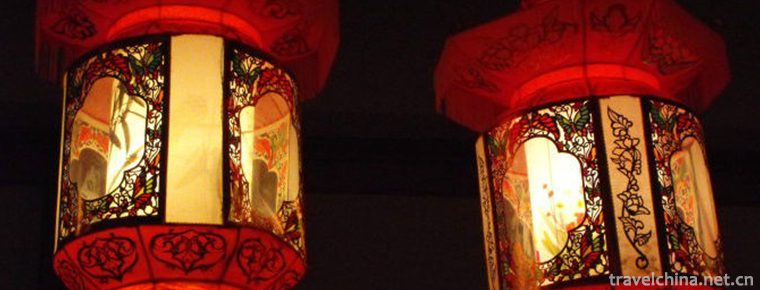
-
Guyuan Northern Dynasty Sui and Tang Dynasties Cemetery
The tombs of the Northern Dynasty and Sui and Tang Dynasties in Guyuan are located in Xiaomazhuang, Yangfang, Shengou, Dabao, Wanglioba, five natural villages in the West and south suburbs of Yuanzhou.
Views: 116 Time 2019-01-12 -
Hongfeng Lake Scenic Area
Hongfeng Lake Scenic Spot is located in the western suburb of Guiyang City, Guizhou Province, China. It is 28 kilometers away from Guiyang, the capital of Guizhou Province..
Views: 158 Time 2019-01-16 -
Answer drum
Answer drums are popular in Quanzhou City, Fujian Province, other areas in southern Fujian Province and Taiwan Province, Hong Kong and Macao, as well as among overseas Chinese.
Views: 171 Time 2019-04-22 -
Gell
"Gar", which means singing and dancing in Tibetan, also means "music and dance", because performing Gar has accompaniment of special instruments. On the staff roster of the Tibetan.
Views: 317 Time 2019-04-30 -
Legend of Camel Spring
Camel Spring is a provincial key cultural relic protection unit and a patriotic education base. Located in Jiezi Township Unity Village, with convenient transportation and direct access to tertiary oi.
Views: 143 Time 2019-05-15 -
Pottery Firing Techniques
Pottery refers to the clay as the body, processed and shaped by hand, wheel system, moulding and other methods, and baked at high temperature of 1000-1200 degrees or so. The production process of pott.
Views: 158 Time 2019-06-18 -
Construction Techniques of Traditional Architecture of Xiangshan Band
Xiangshan Gang's traditional architectural construction techniques, local traditional handicraft techniques in Suzhou City, Jiangsu Province, one of the national intangible cultural heritage..
Views: 109 Time 2019-07-03 -
Yao Peoples Playing Hall
The Playing Hall is a folk grand gathering of memorizing ancestors, recalling history, celebrating harvest, rewarding vows, disseminating knowledge and mass entertainment activities in Liannan Paiyao..
Views: 286 Time 2019-07-11 -
Beijing University of Posts and Telecommunications
More than sixty years of wind and rain, more than sixty years of spring and autumn fruits. In the north of Mingguang and the south of Jimen, the ancient city walls witness the ever-lasting radio waves.
Views: 116 Time 2019-09-22 -
Longhua Baxian Mountain Giant Buddha
Longhua Baxian Mountain Giant Buddha is located in Baxian, Longhua Town, Pingshan County, Yibin City, Sichuan Province. Since the Bamiyan Buddha in Afghanistan was bombed by the Taliban.
Views: 301 Time 2020-10-16 -
Plant resources in Leshan
Leshan City is located in the middle subtropical zone, which is located in the southwest of Sichuan Basin and Hengduan Mountain area. Emei Mountain is the most representative area. There are 1452 species, 585 genera and 141 families of seed plants.
Views: 89 Time 2020-12-17

